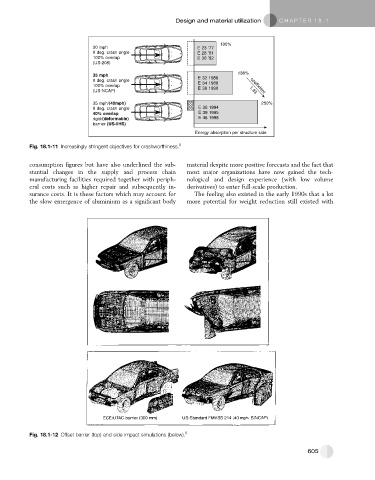Page 594 - Automotive Engineering Powertrain Chassis System and Vehicle Body
P. 594
Design and material utilization C HAPTER 18.1
100%
30 mph E 23 ’77
0 deg. crash angle E 28 ’81
100% overlap E 30 ’82
(US-208)
136%
35 mph E 32 1986
0 deg. crash angle
E 34 1988
100% overlap E 36 1990 coefficient
(US-NCAP) 1.83
35 mph/(40mph) 250%
0 deg. crash angle E 38 1994
40% overlap E 39 1995
rigid/(deformable) E 46 1998
barrier (US-IIHS)
Energy absorption per structure side
Fig. 18.1-11 Increasingly stringent objectives for crashworthiness. 6
consumption figures but have also underlined the sub- material despite more positive forecasts and the fact that
stantial changes in the supply and process chain most major organizations have now gained the tech-
manufacturing facilities required together with periph- nological and design experience (with low volume
eral costs such as higher repair and subsequently in- derivatives) to enter full-scale production.
surance costs. It is these factors which may account for The feeling also existed in the early 1990s that a lot
the slow emergence of aluminium as a significant body more potential for weight reduction still existed with
Fig. 18.1-12 Offset barrier (top) and side impact simulations (below). 6
605

